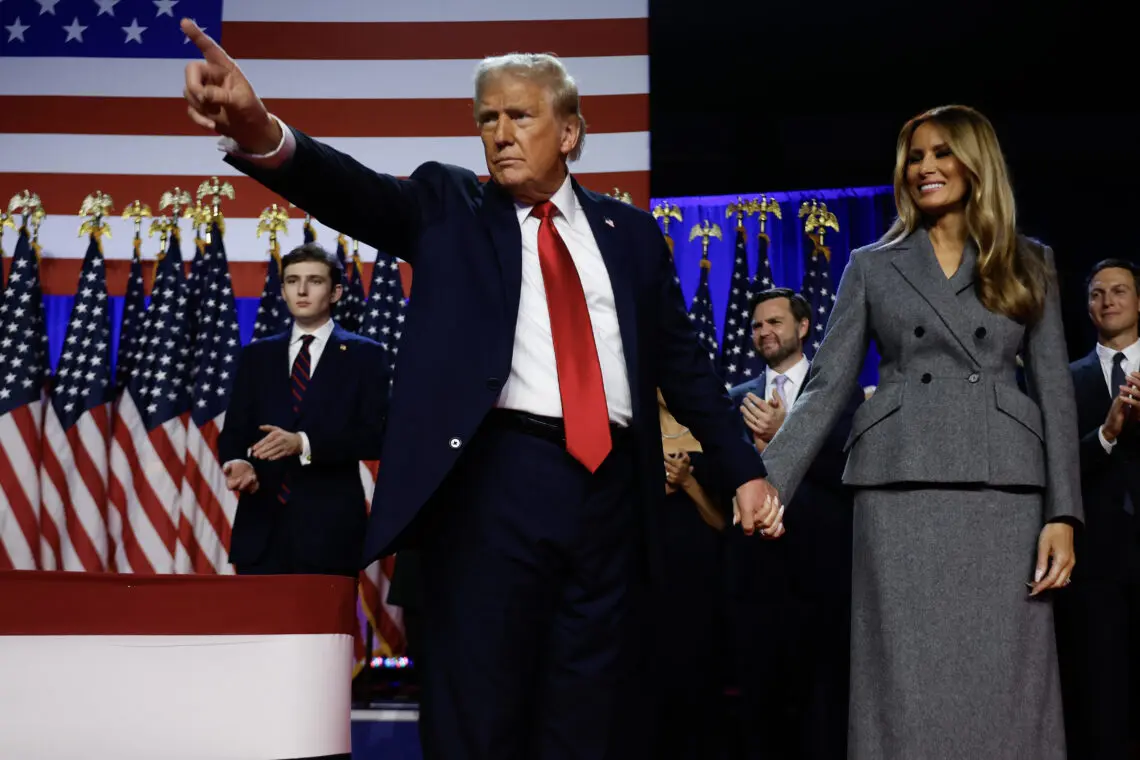Election night viewership: Exploring a significant decline in audience numbers
U.S. Presidential Election 2024: Analyzing Viewership Trends
The 2024 U.S. Presidential election night witnessed approximately 42.3 million viewers during prime time, as indicated by Nielsen data. This represents a significant shift from the 56.9 million viewers who tuned in for the 2020 election coverage, marking a dramatic 26% decline in viewership. Let’s delve into the specifics of this notable change and its implications.
Audience distribution and network performance
The coverage stretched from 7-11 p.m. ET across 18 networks, encompassing major broadcasters such as:
- ABC
- CBS
- FOX
- NBC
- CW
- Merit Street Media
- Scripps News
- Telemundo
- Univision
- CNBC
- CNN
- CNNe
- FOX News Channel
- FOX Business Network
- MSNBC
- Newsmax
- NewsNation
- PBS
The overall rating for the night stood at 13.3, covering approximately 28.45 million households. This broad distribution underscores the importance of network television in political coverage, though the decline in numbers raises questions about shifting viewer habits.
Diving into the demographics
Viewership was highest among individuals aged 55 and over, who made up 24.35 million of the total viewership. The 35-54 age group followed with 11.4 million viewers, and the 18-34 demographic accounted for 4.38 million viewers. These figures highlight a trend where older audiences are more engaged with traditional election night coverage, while younger viewers may be turning to alternative platforms for updates.
Factors influencing the decline
Several contributing factors explain this decline in viewership:
-
Pandemic Impact in 2020: During the 2020 election, many people were still under lockdowns due to COVID-19, leading them to tune in more readily to televised election coverage. The easing of restrictions in 2024 likely meant more people were engaging in other activities.
-
Rising Digital Alternatives: The growth of online streaming services and social media platforms has significantly altered how viewers consume news. Many are opting for real-time updates via mobile devices and computers rather than through conventional TV channels.
Election results and public reaction
Former U.S. President Donald Trump was declared the winner in the early hours of Wednesday, clinching multiple battleground states to secure the 270 electoral votes needed. This rapid declaration defied earlier expectations that results would take several days to finalize.
Vice President Kamala Harris conceded the race later on Wednesday, delivering her speech at Howard University in Washington D.C. “We must accept the results of this election,” she stated. “A fundamental principle of American democracy is that when we lose an election we accept the results… I know many people feel like we are entering a dark time. For the benefit of us all, I hope that is not the case.”
Technological advances and evolving viewer behavior
The manner in which viewers consume election results speaks volumes about broader shifts in media consumption. The dwindling television audience coupled with the rise of digital platforms reflects significant technological advancements and changing viewer preferences.
Shift to real-time digital coverage
In recent years, more viewers have migrated to digital platforms for real-time updates and interactive coverage. Websites, social media, and streaming services offer instantaneous access to information combined with the ability to engage with content dynamically.
Impact on traditional broadcast media
These shifts pose a challenge to traditional broadcast media, which must adapt by innovating and integrating more digital channels to retain and grow their audience base. Enhanced digital content, live streaming options, and cross-platform integration are key strategies for broadcasters.
The role of social media
Social media’s influence cannot be understated, with platforms like Twitter, YouTube, and Facebook providing live updates, opinions, and a forum for debate. The reach and immediacy of social media are powerful tools that attract younger demographics, potentially explaining the drop in younger viewers for traditional election night broadcasts.
The landscape of media consumption is evolving, influenced by technological advancements and changing viewer preferences. This year’s election night coverage highlights these shifts, offering valuable insights for broadcasters and content creators alike.
Discover more in-depth analyses and stay informed on the latest trends by following our updates. Share your thoughts and continue the conversation on our social media channels.

 Italian
Italian







